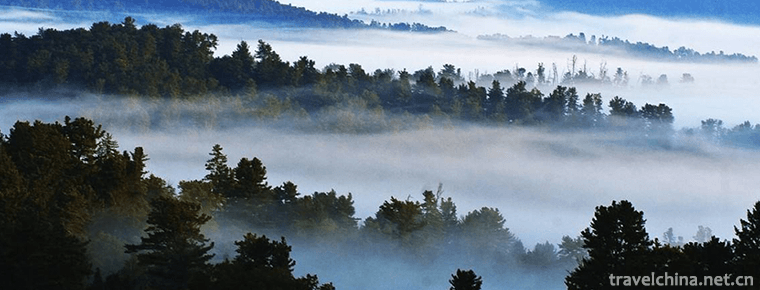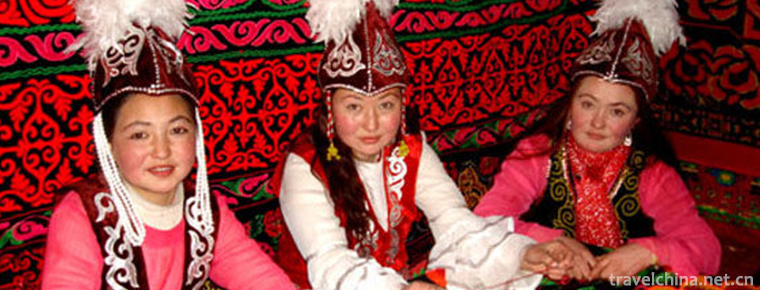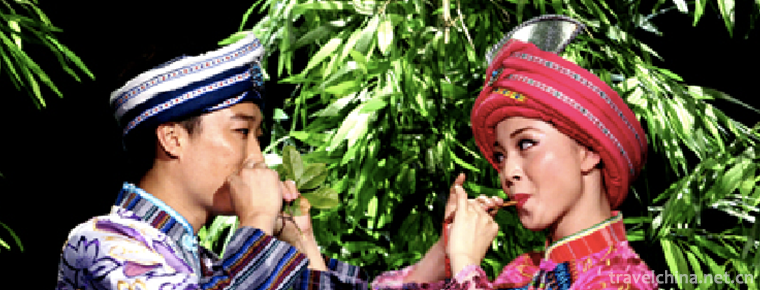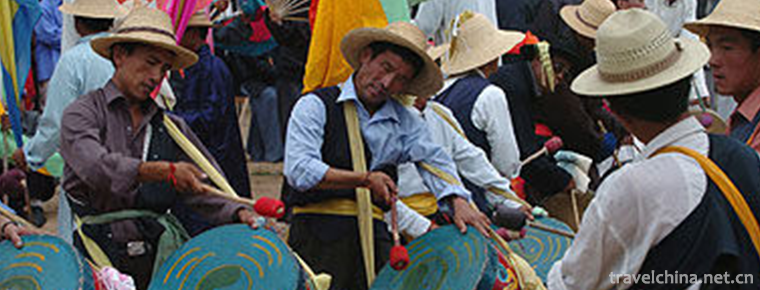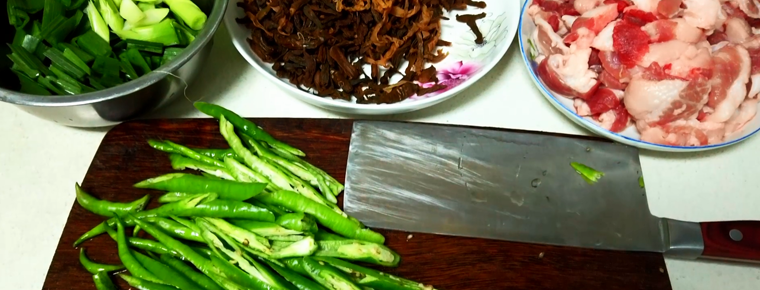Hanging coffin of Bo people BoRen
Hanging coffin of Bo people
"Bo People's hanging coffin" is located in Yibin City, Sichuan Province. It is distributed in Gongxian County, Xingwen County and Junlian county. "Gong county annals" records that "Gongben Bo land, Bo people hanging coffins.". In 1956, cultural relic units at the provincial level have been under priority protection for a long time. Hanging coffin burial is a kind of burial system of ancient Southwest Minorities. Gongxian and Xingwen, bordering on Yunnan, are the hinterland of ancient Southwest Barbarians. Emperor Wu of Han Dynasty opened Yelang and established Qianwei County as Bodao county.
Explanation of Chinese characters
Explanation of the word "Bo" (B ó)
1. Forcing.
2. The names of ancient Southwest Minorities. "Bo people" was first seen in Lu's spring and Autumn Annals. It is said that "there are no monarchs in Diqiang, HUTANG, Lishui, the rivers of Bo, Yeren and Pian, and the villages of zhouren, Shulong and Tui people." "Shuo Wen Jie Zi" records: "Bo, Qianwei Bo man also.". In the Han Dynasty, there were "Dian Bo" in Dian (now central Yunnan), and "qiongbo" in qiongdu (now southwest Sichuan), and "Bodao" (Wuchi road in Qin Dynasty). In Yuan Dynasty, "Bo people" was called "Boyi".
Hanging coffin
Hanging coffin of Bo people
The ancient cliff tombs before the Ming Dynasty are the key cultural relics protection units in China. It is mainly concentrated in matangba and sumawan. It is characterized by placing the coffin of the dead on a cliff. A total of 265 hanging coffins have been preserved, which is the largest and most concentrated place in China. The height of the coffin is generally 10-50 meters away from the surface, and the highest is 100 meters. There are two or three ways to place coffins: one is to drill two or three holes on the cliff to support the coffin; the other is to dig holes in the rock wall to hold the coffin; the third is to use the natural caves and cracks between the rock walls to hold the coffin. Coffin wood big tail small, mostly for the whole wood, with the son mother button and tenon fixed. The burial is carried out on the back and straight limbs. The body is wrapped in sackcloth. The funerary objects are placed on both sides of the foot. The number of funerary objects is uncertain. There are ceramics, bamboo, iron and hemp fabrics. Among them, hemp is the most, and silk is a small amount. There is a great controversy in the academic circles about the family of the hanging coffin burial. The upper limit is unknown and the lower limit is Ming Dynasty.
Catangba hanging coffin
The core part of the hanging coffin of Bo people in Gongxian County. In the southwest of luobiao Town, Gongxian County. The dam is 300-500 meters wide from east to west and about 1000 meters long from north to south. Crab River flows through the dam. There are 21 rolling cliffs on the Bank of the river from east to west. The hanging coffins are distributed on the cliff. There are 223 extant, mainly wooden pile hanging coffins. The height of the coffin is generally 20-60 meters, with a height of more than 100 meters. There are also more than 200 red painted rock paintings and remains of pile holes dense as bee's eyes on the cliff. The rock paintings are rich in content, including riding and shooting, dancing, acrobatics, various animals, weapons, geometric figures, etc., and their images are simple and vivid. Other remains of the hanging coffin also have similar rock paintings. The hanging coffins in matangba are relatively concentrated in coffin shop, shiziyan, jiujiaodeng, Dadongkou, dengjiayan, sanxiandong, Zhusan umbrella and eagle rock.
Sumawan hanging coffin
In caoying Township Haitang village, the North Bank of Dengjia river. The hanging coffin is located on the cliff of sumawan, which confronts it. There are 42 extant hanging coffins, of which 7 are placed on natural caves and rock mounds.
The "Bo people" mainly lived in the south of Sichuan. Since then, despite the ups and downs of ups and downs, it has always been breeding in this land. Bo culture is unique. The mysterious culture represented by the hanging coffin is puzzling though it has lasted for thousands of years. In the days of Wanli (1573) in the Ming Dynasty, people were killed by the one hundred and forty thousand army of the Ming Dynasty and disappeared in history, but the hanging coffin of high hanging people seemed to be telling people about their prosperity and sorrow.
Matongba and sumawan in luobiao, Gongxian County are the most concentrated places of Bo People's coffins. Only on the cliff with a depth of 4km, there are tens of thousands of coffin pile coffin holes; hundreds of hanging coffins are the most concentrated, well preserved and most numerous areas in the world, and are known as "the Museum of natural hanging coffins". Its long history, mysterious legend, mysterious culture and unique burial style are thought-provoking and hard to understand through the ages. At the same time, hundreds of rock paintings with the coffin are colorful and vivid, which vividly reproduce the natural environment, social production, folk customs and religious beliefs of the Bo People's era. There is a stone boat on the right. There are 24 hanging coffins and 62 rock paintings on the limestone cliff shaped like an axe. The rock paintings have a wide range of subjects and rich contents, including horse herding, hook fishing, dance, ball play and key kicking entertainment. Although the composition is simple and the lines are rough, it is full of rich flavor of life and distinct national style. The farthest and tallest are hawk rocks; the 14 hanging coffins are on the cliff more than 110 meters, and are the essence of hanging coffins. On the other hand, sumawan has lofty mountains, towering rocks, clear water, beautiful scenery and charming scenery. On the cliff more than 50 meters away from the water, there are 50 hanging coffins and a large number of pile holes, which give people a strange and mysterious feeling.
In 1988, the hanging coffin of Bo people was listed as a national key cultural relics protection unit. In the same year, the hanging coffin of Bo people was exhibited in Beijing, which made the mystery of hanging coffin more fascinating to the audience in the capital. It has been highly praised by the central leadership and people from all walks of life.
Historical records
According to Yu Ba Shu XI by Sima Xiangru of the Han Dynasty: "the king of Nanyi and the chief of Xibo, he often obeys his duties and dare not be lazy." Zhang Shoujie's Justice: "today's Yizhou Nanrong Prefecture is adjacent to Dajiang River in the north, and the ancient Bo state." Duan Yucai's note: "jieluo is the county, and Bodao county is the county, which is also the governance of Xuzhou Prefecture in Sichuan Province. Its people were called Bo. "Wang Zhi" says, "far away from the screen, Bo is called in the West and Ji is in the East." In the book of Dongxi Xianzhi · Bo people written by Lu Ciyun of the Qing Dynasty, it is said that "Bo Ren is the commander of twelve battalion. The language of luogui and Zhuo is not fluent, so it is translated by Bo people. A felt coat. The female blows the bamboo strip, has the sad sound. On June 24, he worshipped heaven and celebrated his birthday. He did not pray for fire on the new moon. Fierce and aggressive in nature, Lu Lu has the same voice. Good Buddha, holding several beads. He is good at reciting Buddhist mantras, and he is ready to pray. "
During the Wanli period, the power of Bo people became stronger and stronger, and the contradiction between them and the central dynasty of Ming Dynasty was also gradually deepened. According to historical records, the feudal rulers of Ming Dynasty attacked Bo people several times. According to historical records, at that time, the Ming Dynasty mobilized a large army from the three provinces of Yunnan, Guizhou and Sichuan to encircle the Bo People's mountain stronghold. It is said that the internal dispute among the Bo people took place in this cave. Hundreds of stronghold leaders held their own views and discussed here for two days and two nights. At that time, half of the more than 600 Bo People's Shanzhai chose to surrender to the Ming army. At that time, none of the Bo people who surrendered were spared. The number of people killed was almost half of the total number of this tribe. Almost every family of Bo people had relatives or friends killed.
Mystery of hanging coffin
Bo people and other ethnic minorities in the past dynasties lived in this area, so there are many hanging coffins left. But now, the most concentrated places are matangba in luobiao township of Gongxian County and sumawan in caoying township. Matongba, Gongxian County, is long and narrow from north to south, with steep peaks on both sides. There are many coffins hanging on the cliff. There are more than 160 hanging coffins on the cliff. In sumawan, caoying Township, more than 10 kilometers away from matangba, 48 hanging coffins are distributed on the steep limestone wall. Most of the hanging coffins are 26 to 50 meters above the ground, with a height of 100 meters. There are many red painted murals on the cliff of the coffin, which are rich in content, rough lines, concise composition and vivid images. The hanging coffin and rock paintings have important historical value and ornamental value, and they are also the material materials for studying the historical development of ethnic minorities in southern Sichuan. It has become the center of attention of the world's hanging coffin researchers, and attracts countless tourists at the same time. This scenic spot is full of ancient and mysterious colors.
In 1935, a missionary from the United States, Ge Weihan, was very interested in the rich funeral culture in China. He heard that there was a very peculiar funeral custom near Gongxian County, Sichuan Province, China. He could not wait to start his own journey. Although the difficulties and dangers along the way nearly cost the American his life, when he really came to the cliff edge of Gongxian County, he thought that he was worthy of the trip. Graham was stunned by his discovery - this is the hanging coffin. Gongxian's hanging coffin contains almost all kinds of hanging coffins in the world. This is the first time that Gongxian hanging coffin was discovered by the world, which immediately aroused great interest of scholars. In the 1940s, 1970s, 1980s, and the beginning of the 21st century, a batch of scientists came here to solve this eternal mystery. Scientists call the tribes in the hanging coffins here as Bo people, and have speculated where these Bo people have gone, and what causes their descendants to give up their funeral habits? How did it die?
At the end of the 20th century, people found the pingman stele set up by the Ming Dynasty not far from Gongxian County. The handwriting on the stele has been blurred, but the general idea can be barely identified. This is a monument built by the Ming Dynasty to boast about its elimination of the Bo people.
In the face of the mystery left by the Bo people, Chinese ancient architecture experts and poets launched a heated discussion on how to place the hanging coffin on the cliff stake? What is the national cultural connotation of this funeral custom? Many people expressed their opinions. Some thought that they were suspended from the top of the mountain by ropes, some thought that they were raised by the method of joint pile paving. After placing the coffin, the plank road was removed, and some thought that it was carried up by a cloud ladder There are different opinions, and there is no agreement.
According to the chronicles of Yunnan written by Li Jing in Yuan Dynasty, the higher the hanging coffin is, the more auspicious it will be. The one who falls first is the best. This should be the reason why Bo people buried the coffin. Cui Chen has been engaged in Bo culture research for many years. He said that there are three views in the academic circle on the method of placing the hanging coffin: the first is the theory of mountain building by Horst soil; the second is the theory of plank road; the third is the theory of vertical hanging. In the first method, the engineering quantity is very large, tens of meters away from the ground is even up to 100 meters, which is impossible in the ancient Southwest region where the economy and culture are relatively backward and the population is sparse; the second view, after many years of research, no pile hole has been found on the site, so it can be ruled out. The only feasible method should be the hanging method. During the maintenance, marks of rope rope were found on the rock wall, and the saying that "the coffin will be hung by a rope from the top of the mountain" has been confirmed. Thus, the mystery of the hanging coffin can be solved. The reason for the disappearance of the Bo people was that in the late Ming Dynasty, due to the brutal suppression of the ethnic minorities in Sichuan and Yunnan by the Ming army, Duzhangman and Bo people, who were relatively small in population, were slaughtered. In order to avoid disaster, the Bo people moved to other places to hide their names, and eventually disappeared.
Repair the hanging coffin
The maintenance project of Bo People's hanging coffin in Gongxian County was commissioned by the Yibin Municipal Institute of cultural relics and the museum to formulate the implementation plan, which was submitted to the State Administration of cultural relics for approval. The project was officially started in late September 2002. This is the third repair and the largest one since the founding of new China. The first two were in 1974 and 1985. According to Cui Chen, director of Yibin Museum, there are three forms of hanging coffin: one is the wooden pile hanging coffin, the other is the cave type hanging coffin, and the third is the rock mound type hanging coffin, all of which are in Gongxian County. At present, Gongxian County is the place with the largest number of hanging coffins in China. Bo People's hanging coffins are mainly concentrated in matangba and sumawan, about 80 kilometers away from Xunchang town of the county. Hundreds of hanging coffins are placed on the limestone cliffs on both sides, which are 5000 meters long from the north to the south, called Bochuan valley. According to the census of cultural relics in the early 1990s, there are still 280 hanging coffins in Gongxian County. In the past 10 years, nearly 20 of them have fallen and only about 260 are left. In matangba, there are 220 lanterns, sanxiandong, dengjiayan, coffin shop, shiziyan, maoerkeng and jiugeyin in matangba, and more than 40 in sumawan.
These hanging coffins are more than ten meters away from the ground and more than 130 meters high. In the past, the maintenance of the hanging coffin was only to reinforce the wooden piles. This time, the stripping repair of the hanging coffin was added, that is, the damaged part was repaired, and the cracks and loose parts of limestone rock mass were grouted and cast for reinforcement. This maintenance method is the first in China.
The maintenance project of the hanging coffin is mainly carried out in sanxiandong. On September 16, 2002, the construction team entered the matangba dam and set up a scaffold which can only be seen at the construction site under the cliff of more than 300 meters wide in sanxiandong. The maintenance team composed of cultural workers and technical workers of Yibin Museum carries out the maintenance work of the hanging coffin. On September 24, when the cover of the first hanging coffin, which was 20 meters above the ground, was uncovered, the remains of the Bo people more than 400 years ago were discovered! Judging from the skeleton of the remains, this ancient Bo man is not small, but his bones are in disorder. A lot of sand and mud have been accumulated in the coffin, and no burial objects have been found. Cui Chen thinks, do not rule out the possibility that the flying robbers steal the coffin. The hanging coffin was excavated from the whole section of log, about 2 meters long and 0.7 meters wide. The cover of the coffin and the body of the coffin are buckled together by the mouth of the mother and son, weighing about 200 kg. Cultural workers and technical workers should number, measure, register and dredge the coffin in strict accordance with the operating procedures. The coffin is repeatedly painted with tung oil and soaked. Then the remains are placed in order and the coffin is placed in its original place.
The next day, five hanging coffins were opened and a number of precious cultural relics were found. There are two Ming Dynasty blue and white porcelain bowls, a simple iron knife, a small knife, two iron spears, which are Ming Dynasty artifacts. 29 hanging coffins were originally registered in sanxiandong. 16 new coffins were found in this repair. In addition to 2 completely damaged and unable to be repaired, 43 were maintained and repaired. The newly discovered hanging coffin is mainly cave like, covered by vegetation, and could not be observed on the ground in the past. In the process of dredging and repairing the hanging coffin, a small number of burial objects and silk and hemp fabrics were also found; the only hanging coffin of rock mound type did not use the coffin cover of mother and son, and the coffin cover was wedged with the coffin body, and the wooden fence type was used. The rock paintings of the Bo people discovered successively in Sanxian cave and other places are of great significance to the study of the production, life, politics, military and culture of the ancient Bo people.
Notice to visitors
Transportation route: you can take the train from Yibin to Gongxian County. Then transfer to the most concentrated hanging coffins of matangba and sumawan and other places to visit.
Ticket price: scenic spot 20 yuan, website price 15 yuan; children's ticket: height 1.2 meters - 1.4 meters half ticket 10 yuan / person, less than 1.2 meters free; elderly ticket: 60-70 years old with old card to buy 10 yuan / person, over 70 years old with valid certificate free.
Opening hours: 8:00-18:00

-
Shangganling Xishui National Forest Park
Shangganling Xishui National Forest Park combines the strong local flavor and exotic style with the elegance of "paradise". It has both unique natural landscape and distinctive humanistic la.
Views: 383 Time 2018-12-19 -
Beijing opera Peking Opera
Peking Opera, once known as Peking Opera, is one of the five major Chinese operas. The setting lays stress on freehand brushwork. The tone is mainly Xipi and Erhuang.
Views: 196 Time 2019-05-07 -
Kirgiz embroidery
Kirgiz embroidery is a traditional embroidery in Wensu County, Xinjiang Uygur Autonomous Region, China. Kirgiz women are good at embroidery. They embroider various delicate patterns on headscarves, pi.
Views: 279 Time 2019-05-09 -
Qingxu Caimen Building
Qingxu Caimen Tower is a local traditional handicraft in Qingxu County, Shanxi Province. Xu Caimen Tower in Qing Dynasty is said to have originated in Tang Dynasty. During the festival, people gathere.
Views: 144 Time 2019-06-11 -
Tujia Nationalitys Quinone
"Tujia Diaoqu" is not only a wind instrument with peculiar structure, but also a genre of folk songs. At the same time, in Western Hunan, it is also the name of common music cards shared by .
Views: 141 Time 2019-06-23 -
Naton Festival of the Turkish Nationality
Naton is a temple fair where the Tu people in Sanchuan area of Minhe County, Qinghai Province perform Nuo Dance (the first dance) and Nuo Opera (the mask dance) in order to dispel diseases and calamit.
Views: 251 Time 2019-06-23 -
Chengdu Medical College
Chengdu Medical College is a full-time general medical college organized by the Sichuan Provincial People's Government. It is located in Chengdu, the capital of Sichuan Province. Its history can be tr.
Views: 143 Time 2019-08-31 -
Stir fried pork with salted vegetables
Stewed pork with dried plum is a famous traditional flavor dish in Shaoxing, Zhejiang Province. The main raw materials are dried plum and streaky pork. Dried vegetables absorb meat fat to remove astri.
Views: 460 Time 2020-03-18 -
Girl on Bridge Hai Lun Tik Tok Songs 2020 Hot Songs
Girl on Bridge is a song composed and sung by Helen and released on November 9, 2019.
Views: 205 Time 2020-05-21 -
Thousand Buddha Cliffside Sculptures
Qianfo cliff, located 4 kilometers north of Guangyuan City, on the East Bank of Jialing River and on the ancient Shu Road of Jinniu, has a long history and exquisite carving skills. The grottoes began in the late Northern Wei Dynasty, flourished in the Tang Dynasty and ended in the Qing Dynasty. After thousands of years.
Views: 340 Time 2020-11-08 -
Cross stitch of Chinese embroidery
The earliest cross stitch was embroidery on animal fur fabrics with silk extracted from silkworm cocoons. Later, it was used to decorate clothes and furniture. Cross stitch, with its simple embroidery method, noble and gorgeous appearance, exquisite .
Views: 326 Time 2020-12-12

